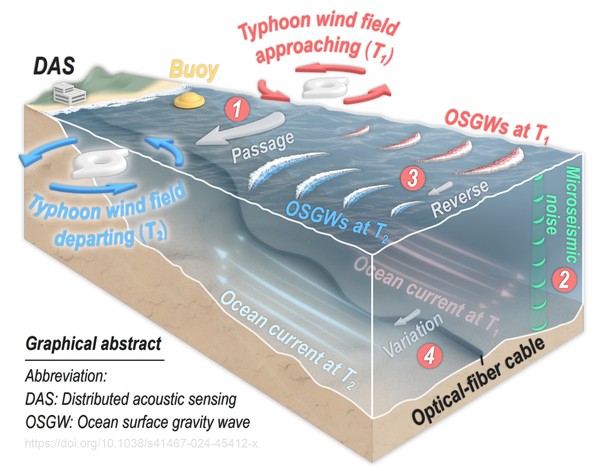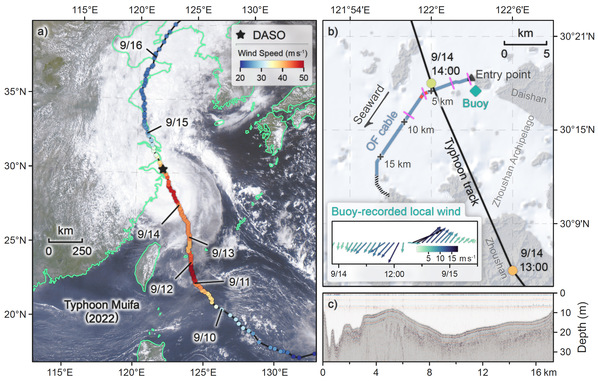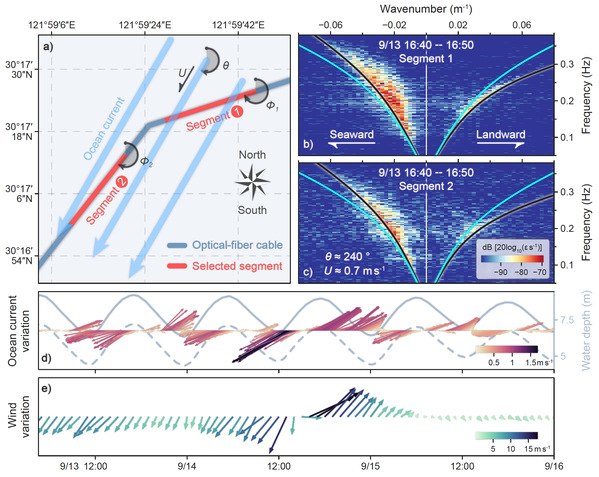ZJU Oceanographers achieve breakthrough in monitoring ocean currents during Typhoon Muifa
LIN Jianmin & FANG Sunke et al. from the Ocean College at Zhejiang University have successfully tackled the challenge of accurately monitoring typhoon development and intensity through in situ observations. Leveraging the submarine optical-fiber distributed acoustic sensing (DAS) technology, the researchers observed the microseismic noise induced by ocean surface gravity waves (OSGWs) during the passage of Typhoon Muifa in 2022. Their findings, published in an open-access article titled “Monitoring ocean currents during the passage of Typhoon Muifa using optical-fiber distributed acoustic sensing” in Nature Communications, shed light on the speed and direction of horizontal ocean currents, as well as OSGW propagations, tidally-induced sea-level fluctuations and sea-surface winds under typhoon conditions (Fig. 1).

Fig. 1: Graphical abstract
The study marks a significant milestone in underwater remote observations, showcasing the capabilities of DAS-instrumented cables to provide uninterrupted data even in extreme weather conditions (Fig. 2). By analyzing the frequency-wavenumber spectral characteristics of low-frequency noise, the researchers were able to discern the influence of the wind field on OSGW propagation during the typhoon’s passage. And they further developed a novel approach to inversing average sea currents, offering valuable insights into ocean dynamics during typhoon events (Fig. 3).

Fig. 2: Distributed acoustic sensing observatory (DASO) and track of Typhoon Muifa (2022).

Fig. 3: Ocean-current measurements during the passage of Typhoon Muifa.
The study’s findings offer promising prospects for future typhoon field observations, opening up a reliable and weather-resistant method for monitoring ocean currents and other vital parameters.